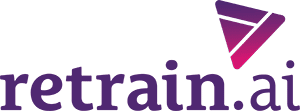Economic shifts are causing some companies to slow down, lay off or cut back on employee services. Does that mean it’s time to hit the brakes on talent development?
Absolutely not.
In fact, it’s the perfect time for enterprises to invest more in the reskilling and upskilling of their people. Doing so only helps to better address the new challenges of today’s financial crisis and prepare to fuel productivity when the economy recovers.
In a recent panel discussion, Dr. Eli Bendet-Taicher, Head of Learning and Talent Development at WIX.com, Ariel Hitron, CEO of Second Nature, and retrain.ai CEO Dr. Shay David offered insights into current trends and challenges, and what it all means for the future of learning and development in HR.
To see the full session on-demand, click HERE.
Here are some highlights:
Ariel Hitron: To quote the World Economic Forum, “One in three global organizations is accelerating upskilling or reskilling programs in response to COVID-19. In doing so, they recognize the value of their people — the vast potential of each individual to leverage his or her existing skills to add value beyond their current role and learn new skills in response to changing needs.”
Backing up a bit, why do you think some enterprises are accelerating upskilling efforts at a time when others are cutting back?
Shay David: When we talk about acceleration, it’s acceleration of several secular trends that already started years ago–namely the capability to be flexible and work remotely, the capability of doing more knowledge work, the capability of having flexible teams. If we look at the larger trends in the market, a lot of it has been about the move into digital services, digital economy, digital transformation in general.
COVID didn’t invent any of these trends, it was just the accelerator that forced a lot of people to rethink: What are we doing? What skills does our team need? Are we giving our teams those skills? All of the sudden, businesses found themselves needing to reinvent. And when you reinvent a business, you have to add new skills. At retrain.ai, we focus on understanding what that skills landscape looks like, and with a lot of our customers, we’re definitely seeing that trend.
AH: Now we’re heading into a slowdown in the market. Hiring is definitely changing. Do you think this will also have an impact on the upskilling, reskilling and learning programs? What are your thoughts on that?
Eli Bendet-Taicher: A lot of companies have been downsizing in the past few weeks and months–but they don’t want to downsize their business. So they’re finding ways to be more effective and productive with fewer people. They may need employees to take on more responsibilities or change roles, which in turn means they need to be reskilled or upskilled through programs that are ready to go.
So I actually think this recession will make companies and organizations actually invest more in L&D, more in reskilling and upskilling programs, because they just have to. They still need to thrive, they still need to bring money to the table, and there may be other changes coming. They may even need to pivot the business at some point, and they’ll need to train their people with everything they have in order to do that.
AH: Okay, so as a business leader you have to do more with less, or more with what you have in terms of human resources. Picking up on that, what do you think learning and development leaders need to do to support that?
EBT: At Wix, we needed to really map the skill set and competencies for each role at the company. You have to be able to see what kinds of roles you have, what kinds of roles you need, and what it will take to deliver the expertise in each skill set for every role. It’s a full understanding of: This is what I want, this is what I have, and what is the gap. From there you can create programs specific to bridging that gap.
We found we also needed to have a great interoperability policy. If I’m moving a person from one role to another, our organization needs to support that person with upskilling and reskilling so they’re able to do the job the best way they can. At the end of the day, you need to invest in people’s learning and development so they know they have that support.
AH: Wow, a lot, a lot unpack there. So why don’t we start with the mapping of the skills for each role? Shay, you’ve spent quite a bit of time thinking about this challenge. Maybe you can share some of your insights?
SD: In our view, skills are the atoms that can help define what tasks are; tasks join into roles and roles join into occupations. You can also talk about an interesting hierarchy like capabilities and competencies–there are many different ways to skin the skills cat, if you will–but the bottom line is that you need to have a unified language that consolidates different systems within an organization that are otherwise siloed.
Think about most of the organizations you’ve met to date. They probably have some sort of human resource information system or some human capital management system, most have learning management systems, probably some sort of onboarding system, employee performance systems, comp and benefit, and so on. Organizations, particularly global enterprises, have six or seven different systems to view their employees. The challenge that we have is that most of those systems don’t speak the same language. So the first order of business is to get the proper language in order to create a cohesive job architecture and skills taxonomy.
In our second post of this series, hear from our panelists about calibrating the macro and micro elements of skills mapping, the demand for hard and soft skills, and how AI can both transform data into actionable insights and enhance–not replace–the human experience of work.
retrain.ai is a Talent Intelligence Platform designed to help enterprises hire, retain, and develop their workforce, intelligently. Leveraging Responsible AI and real-time labor market data, enterprises unlock talent insights and optimize their workforce effectively to lower attrition, win the war for talent and the great resignation in one, data-driven solution. To learn more book a demo.










